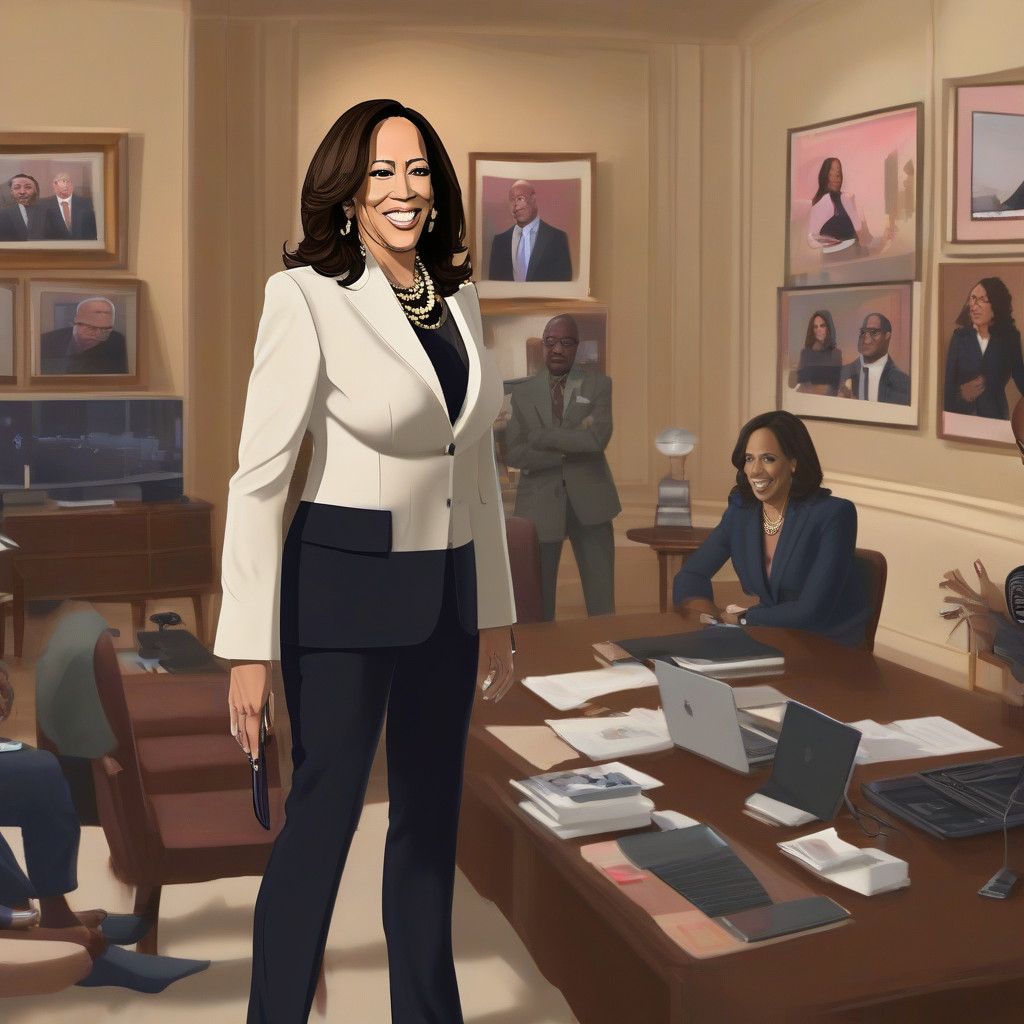As we prepare for the 2024 presidential election, the significance of fashion and beauty choices can’t be underestimated, especially for prominent political figures. A recent episode of The Debrief Podcast dives into this topic, focusing on Kamala Harris, the first female, Black, and South Asian Vice President of the United States. Harris’s wardrobe decisions and beauty routines are not just personal expressions; they are intricately connected to her political identity and the broader cultural conversations around representation in politics.
Fashion as a Form of Communication
In a world where appearance often speaks louder than words, Kamala Harris’s sartorial choices play a crucial role in how she is perceived. Senior correspondent Sheena Butler-Young notes, “No one truly opts out of signalling something with how they present themselves.” This understanding is particularly relevant for Harris, who faces the unique challenge of navigating the expectations tied to her identity while striving to resonate with a wide range of voters.
For many, Harris’s style represents a blend of traditional political attire with personal statements. Her signature silk-pressed hairstyle, a style deeply rooted in the heritage of Black women, has garnered attention among younger generations. Yola Mzizi, an editorial apprentice on the podcast, highlights that Black Gen-Z voters have even dubbed it the “presidential silk press.” This term not only honors the hairstyle’s cultural significance but also frames it as a way to champion Harris’s candidacy in an engaging manner.
Harris’s choice of clothing, particularly her array of tailored pantsuits, reflects both her adherence to conventional political dress codes and a calculated strategy to appeal to diverse audience segments. The careful selection of colors—often oscillating between black, grey, and navy, paired occasionally with softer pastels—signals a commitment to professionalism while also hinting at her personality. However, the scrutiny it attracts underscores a broader discussion about how female politicians often have less freedom in style experimentation compared to their male counterparts.
Comparative Freedom in Male Politics
Interestingly, while Harris remains bound by traditional expectations in her fashion choices, male politicians appear to enjoy more freedom. The podcast notes examples such as Minnesota Governor Tim Walz, who sports relaxed gear like red wing boots and camouflage hats, which serve to endear him to a particular voter demographic. In contrast, Harris’s attires seldom invite such playful interpretation, marking a disparity that echoes societal attitudes toward gender and authority.
The juxtaposition of these styles emphasizes a significant point: clothing in politics is laden with meaning, and those meanings are often interpreted through the lens of gender and race. Butler-Young articulates this disparity succinctly, stating that Harris “doesn’t seem to have the license” to experiment as freely as her male colleagues.
An Evolving Role for Fashion in Politics
The current political landscape signals an evolving recognition of the power of fashion within political contexts, particularly for underrepresented groups. The 2024 election cycle has already showcased the intersection of beauty and activism, exemplified by Black-owned beauty brand BLK/OPL’s pivotal role as the first beauty sponsor at the Democratic National Convention. According to Mzizi, Harris’s candidacy is “opening up new avenues for different kinds of brands to have their say in this larger conversation,” indicating a progressive shift in how beauty influences political branding.
Should Harris succeed in her presidential bid, there is a strong possibility that she could wield her platform to promote the visibility of minority designers and brands. During her tenure as Vice President, Harris has already made deliberate choices to wear pieces from Black designers, which, if expanded upon, could reshape the narrative around fashion’s role in politics. Mzizi expresses that while Harris currently appears constrained by expectations, victory could provide her with the freedom to advocate for more diverse representation in fashion.
Conclusion
As the 2024 campaign approaches, Kamala Harris’s choices in fashion and beauty come into sharper focus as touchstones for broader discussions on identity, race, and representation in political spheres. Through her carefully curated image, Harris communicates not just her personal style but also signals to her constituents about her values and vision. The insights provided by the podcast highlight the intricacies of political style, inviting a deeper understanding of how fashion serves as both a personal and political language in today’s society.












